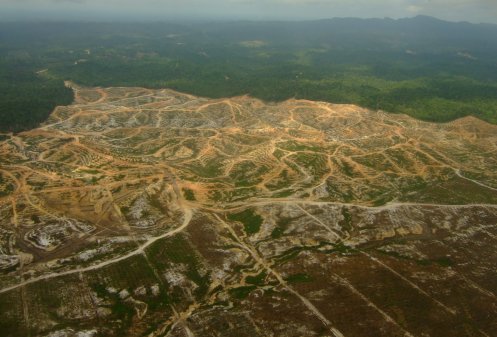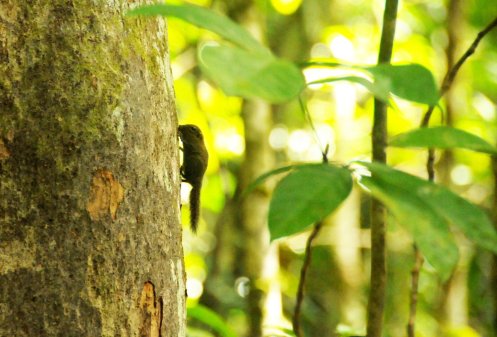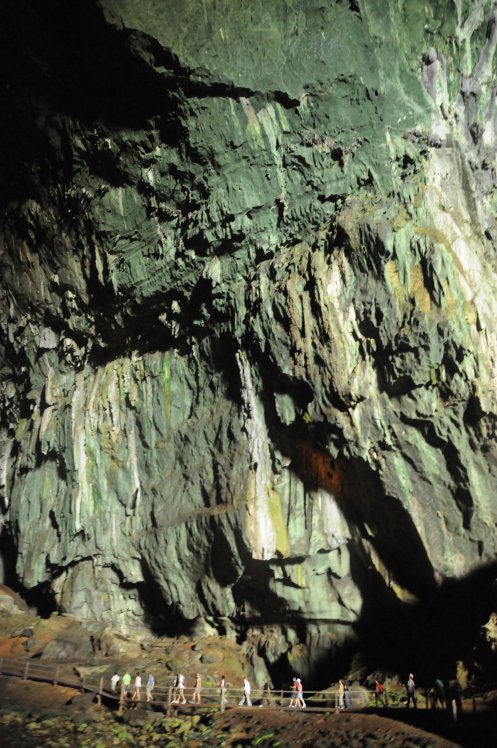
Bako is Sarawak’s oldest national park and one of the highlights of Borneo. The park occupies a promontory between the mouths of the Bako and Sarawak rivers. It is a very beautiful place of Lush forests and mangrove fringed beaches facing out into the South China Sea.
Getting there is an adventure in itself – an hours bus ride from Kuching takes you to Bako Bazzar a jetty just inside the park where you take a boat down the Bako estuary past river villages and the occasional fresh water crocodile sunning itself on the rocks. After 30 mins you arrive at park HQ.

We met some nice ex-pat Brits on the boat – Colin from Singapore who is a business news correspondent and Mick from Vietnam who’s been teaching English around SE Asia for 14 years!
On checking into our accomodation we were told that there was little or no water in the park, so washing was going to be impossible and what little water there was would be used to flush the toilet from time to time – it took an hour for the cistern to fill! Ordinarily this would be bad enough but we a taking about 35 degree heat here with very high humidity! We decided we were going to have to slum it for a few days and just be content to be dirty as hell!
We dropped off our bags and stood in front of the fan in our room for a bit to cool off. Then we met up with Colin and Mick for a walk to beach Telok Paku. We were only 2 minutes into the walk – still walking on the boardwalks near the park HQ – when we spotted one of the parks most famous inhabitants – the rare Proboscis monkey. This one was a large dominant male – hence the huge nose – the bigger the conk the higher up the pecking order he is!

The walk to the beach was amazing and exactly what you think of as Borneo – huge trees and creepers everywhere, roots that have to be climbed over. Susan once again in her element! The humidity was quite incredible I don’t think we have ever sweat so much in our lives!


After the trek Colin and Mick went for a wash in the sea – we thought about it but the thought of getting into the sea in the semi-dark with crocs around put us off a bit. We let the sweat dry on us instead. We then had to decide wether we wanted to change into a clean set of clothes or just go the whole hog and stay in the same clothes for the next day and a half until we got back to running water and sanity. We went with option two.
The next day we did 2 short walks and were lucky again very near the park HQ. First up we saw some beautiful silver leaf monkeys with little yellow babies that looked like teletubbies!

Later we saw a big group of proboscis monkeys jumping between the trees.


The big animals are great to see but the park’s small creatures are just as impressive and so easily missed. On one of our walks we saw some leaf cutter ants that had made a nest out of leaves. There were a group of ants on the outside defending the nest and reacting to our every move. We also saw a huge convoy of termites – about 10cm wide and at least 100m long – crossing over all sorts of obstacles, presumably moving to a new nest as they were carrying larvae with them. If you put your foot near them the outer termites would stop and guard the perimeter against possible attack. Susan and I grew up watching David Attenborough so to see this stuff with our own eyes was a lifetime’s dream fullfilled!

There is so much life in the jungle and as two people with a science background it was amazing to see close up. If you doubt evolution then come here – no where is the fabric of life more tightly woven together – nothing is wasted, everything recycled. Fallen trees are everywhere, but you get the feeling that nothing is really dead here. Something – more than likely millions of things will call it home.
Posted in Borneo, Malaysia






















































